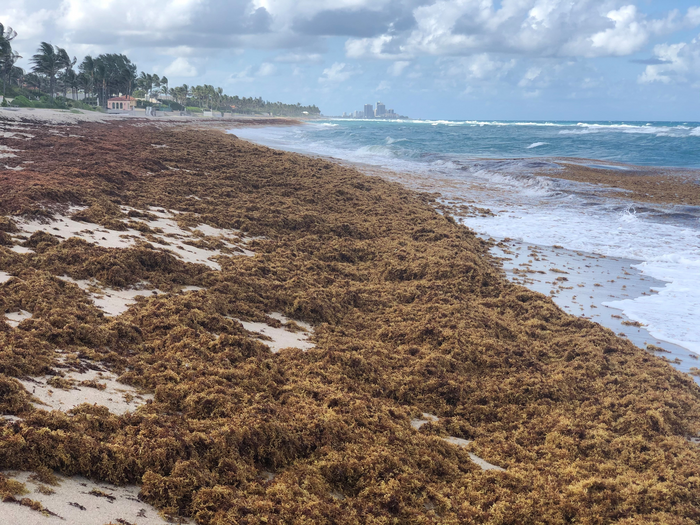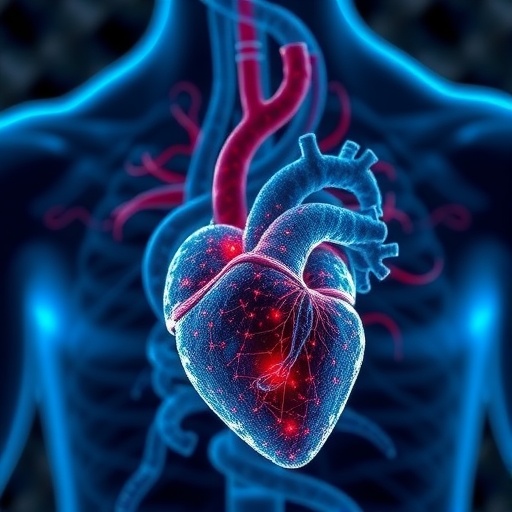A new study uncovers how the interplay between Sargassum spp., plastic marine debris and Vibrio bacteria creates the perfect “pathogen” storm that has implications for both marine life and public health. Vibrio bacteria are found in waters around the world and are the dominant cause of death in humans from the marine environment. For example, Vibrio vulnificus, sometimes referred to as flesh-eating bacteria, can cause life-threatening foodborne illnesses from seafood consumption as well as disease and death from open wound infections.

Credit: Brian Lapointe, FAU Harbor Branch
A new study uncovers how the interplay between Sargassum spp., plastic marine debris and Vibrio bacteria creates the perfect “pathogen” storm that has implications for both marine life and public health. Vibrio bacteria are found in waters around the world and are the dominant cause of death in humans from the marine environment. For example, Vibrio vulnificus, sometimes referred to as flesh-eating bacteria, can cause life-threatening foodborne illnesses from seafood consumption as well as disease and death from open wound infections.
Since 2011, Sargassum, free-living populations of brown macroalga, have been rapidly expanding in the Sargasso Sea and other parts of the open ocean such as the Great Atlantic Sargassum Belt, including frequent and unprecedented seaweed accumulation events on beaches. Plastic marine debris, first found in surface waters of the Sargasso Sea, has become a worldwide concern, and is known to persist decades longer than natural substrates in the marine environment.
Currently, little is known about the ecological relationship of vibrios with Sargassum. Moreover, genomic and metagenomic evidence has been lacking as to whether vibrios colonizing plastic marine debris and Sargassum could potentially infect humans. As summer kicks into high gear and efforts are underway to find innovative solutions to repurpose Sargassum, could these substrates pose a triple threat to public health?
Researchers from Florida Atlantic University and collaborators fully sequenced the genomes of 16 Vibrio cultivars isolated from eel larvae, plastic marine debris, Sargassum, and seawater samples collected from the Caribbean and Sargasso seas of the North Atlantic Ocean. What they discovered is Vibrio pathogens have the unique ability to “stick” to microplastics and that these microbes might just be adapting to plastic.
“Plastic is a new element that’s been introduced into marine environments and has only been around for about 50 years,” said Tracy Mincer, Ph.D., corresponding lead author and an assistant professor of biology at FAU’s Harbor Branch Oceanographic Institute and Harriet L. Wilkes Honors College. “Our lab work showed that these Vibrio are extremely aggressive and can seek out and stick to plastic within minutes. We also found that there are attachment factors that microbes use to stick to plastics, and it is the same kind of mechanism that pathogens use.”
The study, published in the journal Water Research, illustrates that open ocean vibrios represent an up to now undescribed group of microbes, some representing potential new species, possessing a blend of pathogenic and low nutrient acquisition genes, reflecting their pelagic habitat and the substrates and hosts they colonize. Utilizing metagenome-assembled genome (MAG), this study represents the first Vibrio spp. genome assembled from plastic debris.
The study highlighted vertebrate pathogen genes closely related to cholera and non-cholera bacterial strains. Phenotype testing of cultivars confirmed rapid biofilm formation, hemolytic and lipophospholytic activities, consistent with pathogenic potential.
Researchers also discovered that zonula occludens toxin or “zot” genes, first described in Vibrio cholerae, which is a secreted toxin that increases intestinal permeability, were some of the most highly retained and selected genes in the vibrios they found. These vibrios appear to be getting in through the gut, getting stuck in the intestines and infecting that way.
“Another interesting thing we discovered is a set of genes called ‘zot’ genes, which causes leaky gut syndrome,” said Mincer. “For instance, if a fish eats a piece of plastic and gets infected by this Vibrio, which then results in a leaky gut and diarrhea, it’s going to release waste nutrients such nitrogen and phosphate that could stimulate Sargassum growth and other surrounding organisms.”
Findings show some Vibrio spp. in this environment have an ‘omnivorous’ lifestyle targeting both plant and animal hosts in combination with an ability to persist in oligotrophic conditions. With increased human-Sargassum-plastic marine debris interactions, associated microbial flora of these substrates could harbor potent opportunistic pathogens. Importantly, some cultivation-based data show beached Sargassum appear to harbor high amounts of Vibrio bacteria.
“I don’t think at this point, anyone has really considered these microbes and their capability to cause infections,” said Mincer. “We really want to make the public aware of these associated risks. In particular, caution should be exercised regarding the harvest and processing of Sargassum biomass until the risks are explored more thoroughly.”
Study co-authors represent the NIOZ Royal Netherlands Institute for Sea Research, the Japan Agency for Marine-Earth Science and Technology, the Ludwig Maximilian University of Munich, Germany, Emory University, the University of Amsterdam and the Marine Biological Laboratory.
This research was supported by the National Science Foundation (NSF) (grant OCE-1155671 awarded to Mincer), FAU World Class Faculty and Scholar Program (awarded to Mincer), NSF (grant OCE-1155571 awarded to Linda A. Amaral-Zettler, Ph.D., corresponding author, NIOZ), NSF (grant OCE-1155379 awarded to Erik R. Zettler, Ph.D., co-author, NIOZ), NSF TUES grant (DUE-1043468 awarded to Linda Zettler and Erik Zettler).
– FAU –
About Florida Atlantic University:
Florida Atlantic University, established in 1961, officially opened its doors in 1964 as the fifth public university in Florida. Today, the University serves more than 30,000 undergraduate and graduate students across six campuses located along the southeast Florida coast. In recent years, the University has doubled its research expenditures and outpaced its peers in student achievement rates. Through the coexistence of access and excellence, FAU embodies an innovative model where traditional achievement gaps vanish. FAU is designated a Hispanic-serving institution, ranked as a top public university by U.S. News & World Report and a High Research Activity institution by the Carnegie Foundation for the Advancement of Teaching. For more information, visit www.fau.edu.
Journal
Water Research
DOI
10.1016/j.watres.2023.120033
Method of Research
Experimental study
Subject of Research
Cells
Article Title
“Sargasso Sea Vibrio bacteria: underexplored potential pathovars in a perturbed habitat”
Article Publication Date
3-May-2023




